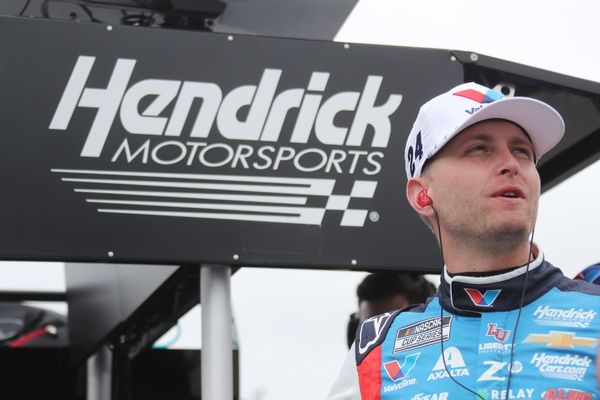
Our survey ranks funds for cost efficiency in 55 categories.
What’s the best ETF? The cheapest one.
If you want index investing, ignore past performance. Home in on the most cost-effective fund.
The Forbes Best ETF survey will help you do that. It displays the lowest-cost exchange-traded funds in each of 55 categories, from the S&P 500 to gold to medium-term government bonds to single-country stocks.
The Biggest ETFs
These are the largest of the 737 Best ETFs.
| Ticker | Exchange-Traded Fund | Holding Cost1 | Liquidity Score2 | Assets ($bil) |
| SPY | SPDR S&P 500 | $154 | A+ | 254.0 |
| IVV | iShares Core S&P 500 | 63 | A+ | 146.7 |
| VTI | Vanguard Total Stock Market* | 35 | A+ | 94.6 |
| VOO | Vanguard S&P 500 | 65 | A+ | 88.2 |
| EFA | iShares MSCI EAFE | 493 | A+ | 78.3 |
| VEA | Vanguard FTSE Developed Markets* | -9 | A | 72.1 |
| VWO | Vanguard FTSE Emerging Markets | 156 | A | 65.9 |
| QQQ | PowerShares QQQ | 324 | A+ | 62.1 |
| IEFA | iShares Core MSCI EAFE | 64 | A+ | 58.8 |
| AGG | iShares Core US Aggregate Bond | 78 | A+ | 55.3 |
*Best ETFs Honor Roll Member
1 Cumulative cost of holding a $10,000 position for a decade. Incorporates annual expense ratio, bid/ask spreads and cost offset from securities lending. 2Reflects bid/ask spreads and trading volume. A = easy to trade.
Data sources: Morningstar, Bloomberg, fund distributors.
Almost all ETFs are index funds, mechanically tracking a fixed collection of securities. There’s a reason passive investing has attracted trillions of dollars. It eliminates the cost drags attached to active portfolio management.
Who’s got the cheapest ETF covering the whole U.S. stock market? The iShares family from BlackRock (BLK) wins this prize, with a fund that, over the course of a decade, will chip only $6 out of a $10,000 investment. For inflation-protected bonds, Schwab (SCHW) is the place to go, with an $85 cost over ten years. In small foreign stocks, Vanguard stands out. It has an index fund that is so efficient the cost is negative.
The Best ETFs list covers 737 funds with at least $10 million in assets and with effective expense ratios no higher than 0.4%. Not covered: somewhat more than 1,100 funds that are either too tiny or too costly to be worth your attention.
Within the group that makes our 0.4% cutoff there is huge variation in efficiency. In short-term bonds an iShares offering is at the top with a $70 cost for a $10,000 investor holding for ten years. At the bottom of the pile: something from Pimco that costs nine times as much.
New this year in the Forbes Best ETF ratings is an Honor Roll of 64 funds. These combine excellent cost efficiency with liquidity, meaning that you can get in and out without getting hosed by market makers. Vanguard has 17 funds on this select list, the largest of them its Total Stock Market ETF (VTI), with $95 billion in the ETF share class. The ten-year cost of this product is $35. We give it a liquidity grade of A+.
The giant iShares family (assets represented in this survey: $1.1 trillion) accounts for 17 Honor Roll funds. The largest is its Core U.S. Aggregate Bond (AGG), with $55 billion in assets, a ten-year cost of $78 an A+ for liquidity.
Schwab has 12 Honor Roll members, not bad for a relatively recent entrant in the ETF business that has only a tenth of BlackRock’s assets. Its big winner is its U.S. Broad Market (SCHB) fund, with $11.8 billion, a cost of $32 and an A for liquidity.
The survey is divided into 21 chapters, linked below. The large-cap chapter has separate rankings for the diversified, growth and value categories, the sector chapter 15 categories, the bond chapters separate rankings of government-only portfolios.
U.S. Stocks
U.S. Bonds
Best ETFs: International Bonds
International
Best ETFs: Large Foreign Stocks
Best ETFs: Small Foreign Stocks
Best ETFs: Regional Foreign Stocks
Best ETFs: Single-Country Stocks
Other
Best ETFs: Commodities and Currencies
Best ETFs: Socially Conscious Funds
Conspicuously absent from our ratings: any element of performance. You don’t select one S&P 500 fund over another S&P 500 fund because it did well; they perform the same, apart from the cost element.
Which category should you put money into? We can’t tell you whether big companies will outperform small ones or foreign bonds will outperform domestic ones. Neither will past results give you any hint of the future. You have to make your category choices on some other basis, such as controlling your risk and getting diversification.
Having chosen a category, you should focus on costs. The difference between a somewhat cheap and a very cheap fund can mean thousands of dollars over the course of an investing career.
The costs we cite assume a purchase and a sale ten years apart on a $10,000 investment growing 5% a year. Commission costs, which vary greatly and are often zero, are not included.
Our cost formula has three elements. One is the expense ratio reported in the fund’s prospectus. Next is the bid/ask spread maintained by market makers in the ETF. The third item is something you won’t find in other ETF ratings: the cost offset that the fund manager delivers to you by lending securities to short-sellers.
Securities lending is a big business, yielding $777 million a year to investors in Best ETFs. In a portfolio of small-company, foreign or speculative shares, it can exceed the expense ratio. That’s how Vanguard FTSE All-World ex-U.S. Small-Cap (VSS) wound up with a ten-year holding cost of -$223 per $10,000 invested.
Our liquidity grades are based on two factors, the bid/ask spread and the dollar trading volume. A busy ETF might be quoted with a basis point ($1 per $10,000) of difference between bid and ask, a sleepy one with a gap 60 times that. The range in volumes is considerably greater. On an average day the Legg Mason Developed ex-U.S. Core ETF sees $29,000 of trading, the SPDR S&P 500 fund $29 billion.
Liquidity grades are awarded on the curve against the entire set of 737 Best ETF funds. The best 5% get an A+.
Small investors who are going to stay put for a long time can ignore liquidity. Everyone else should pay attention to it. The Honor Roll is limited to funds with a liquidity grade of B or better, meaning they are in the top half of the universe in tradability.
Our data on assets, expense ratios and trading volumes came from Morningstar. We retrieved bid/ask spreads at different times on four days from Bloomberg.
The securities lending data came from fund sponsors. All of the big ETF companies provided lending numbers. Sponsors that did not respond to requests for data, such as Oppenheimer and VanEck, have cost calculations assuming no lending offset.
The survey includes funds with expense ratios above 0.4% if the effective cost (expense less lending offset) is below that cutoff.
Morningstar is the place to go for detail on a fund: holdings, distributions, bond maturities, performance history, links to SEC filings. You can get a fair amount of info for free and a lot more with a subscription.
The Cheapest Funds
These funds score lowest in net cost. A negative number means the fund more than earned back its expenses by lending out securities to short-sellers.
| Ticker | Exchange-Traded Fund | Holding Cost1 | Liquidity Score2 | Assets ($bil) |
| PBW | PowerShares WilderHill Clean Energy | -$2,437 | D | 0.1 |
| PBE | PowerShares Dynamic Biotechnology & Genome | -879 | C | 0.2 |
| ECNS | iShares MSCI China Small-Cap | -679 | F | 0.02 |
| XTL | SPDR S&P Telecom | -648 | C | 0.1 |
| ICLN | iShares Global Clean Energy | -598 | C | 0.2 |
| VSS | Vanguard FTSE All-Wld ex-US SmCp * | -223 | B | 5.0 |
| VOX | Vanguard Communication Services * | -200 | B | 0.9 |
| IYZ | iShares U.S. Telecommunications * | -168 | B | 0.3 |
| SPSM | SPDR Portfolio Small Cap * | -130 | B | 1.0 |
| SCHA | Schwab US Small-Cap* | -61 | A | 7.4 |
| IJR | iShares Core S&P Small-Cap * | -51 | A+ | 38.6 |
| VXF | Vanguard Extended Market * | -28 | A | 6.0 |
| IWO | iShares Russell 2000 Growth * | -23 | A | 9.6 |
| SPDW | SPDR Portfolio World ex-US * | -11 | A | 2.7 |
| VEA | Vanguard FTSE Developed Markets * | -9 | A | 72.1 |
| VB | Vanguard Small-Cap * | -3 | A | 22.4 |
| IWM | iShares Russell 2000 | 2 | A+ | 43.0 |
| ITOT | iShares Core S&P Total US Stock Mkt * | 6 | A | 13.4 |
| IEMG | iShares Core MSCI Emerging Markets * | 10 | A+ | 49.9 |
| VBK | Vanguard Small-Cap Growth * | 16 | B | 7.7 |
| SPMD | SPDR Portfolio Mid Cap * | 16 | B | 0.6 |
| SCHC | Schwab International Small-Cap Eq * | 20 | B | 2.0 |
| SPTM | SPDR Portfolio Total Stock Market * | 32 | A | 1.9 |
| SCHB | Schwab US Broad Market * | 32 | A | 11.8 |
| VPL | Vanguard FTSE Pacific * | 34 | A | 4.8 |
| VTI | Vanguard Total Stock Market * | 35 | A+ | 94.6 |
| CIU | iShares Intermediate Credit Bond * | 37 | A | 6.9 |
| CRED | iShares US Credit Bond * | 42 | B | 1.5 |
| VTWO | Vanguard Russell 2000 | 42 | B | 1.4 |
| SCHX | Schwab US Large-Cap | 43 | A | 12.2 |
| SPLG | SPDR Portfolio Large Cap | 47 | A | 1.2 |
| VGK | Vanguard FTSE Europe * | 49 | A+ | 18.9 |
| XRT | SPDR S&P Retail * | 50 | A | 0.3 |
*Best ETFs Honor Roll Member
1 Cumulative cost of holding a $10,000 position for a decade. Incorporates annual expense ratio, bid/ask spreads and cost offset from securities lending. 2Reflects bid/ask spreads and trading volume. A = easy to trade.
Data sources: Morningstar; Bloomberg; fund distributors.
For more of the 2018 Mid-Year Investment and Tax Guide, click here.







